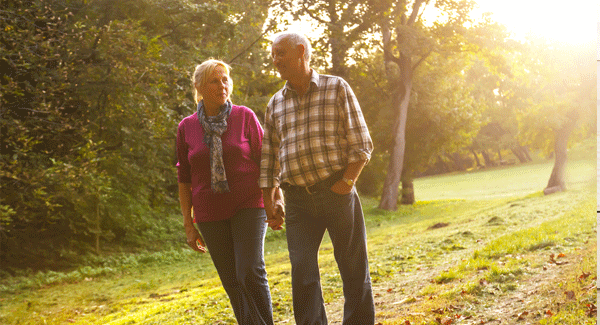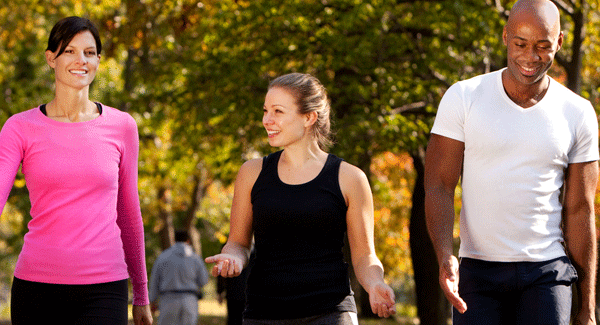Why Try Nordic Walking?
Learn why adding trekking poles to your walking routine can add stability and burn more calories.
By Sean Kelley
Trekking poles, traditionally used in Nordic walking, are almost everywhere walkers walk today – and with good reason: Using them burns more calories and has other benefits that regular walking doesn’t offer. And here’s the good news for people with arthritis: The poles used in Nordic walking help with balance and stability and can make walking easier while still providing a great workout.
Benefits of Nordic Walking
“For people with joint injuries in their lower bodies or lower back, trekking poles can help absorb some of the landing impact with each step, particularly when going downhill,” says Martica Heaner, PhD, an exercise physiologist, nutritionist and certified Nordic walking instructor in New York City. The poles help keep the body upright and symmetrical, improving balance, Heaner says.
Research by The Cooper Institute in Dallas shows that Nordic walking burns about 20% more calories and uses more oxygen than just walking – without making you feel you’re working harder. And a study of fibromyalgia patients found that Nordic walking helped improve physical function more than a lower-intensity walking program.
Choosing & Using Trekking Poles
The cost of entry-level walking poles starts around $50. They are sized to fit your stride and height – your elbows should generally be at about 90 degrees when you hold the pole tips by your toes, although that may vary for comfort. Adjustable poles for different terrains and comfort are available. “Good poles should have comfy and easy-to-fit hand straps, and they should have a metal spike on the bottom – to be used in dirt or snow if needed – that can be covered with a rubber ‘paw’ to be used on asphalt,” Heaner says. Hand straps may help people with arthritis in their hands, she says, “but there is still some gripping that must be done.”
You can use different types of walking movements, such as speeding up into a gliding motion or even into a walking run. And the poles can help you up and down hills with more support and control, Heaner says, and give you a more “interesting and challenging” workout.
Trekking poles, traditionally used in Nordic walking, are almost everywhere walkers walk today – and with good reason: Using them burns more calories and has other benefits that regular walking doesn’t offer. And here’s the good news for people with arthritis: The poles used in Nordic walking help with balance and stability and can make walking easier while still providing a great workout.
Benefits of Nordic Walking
“For people with joint injuries in their lower bodies or lower back, trekking poles can help absorb some of the landing impact with each step, particularly when going downhill,” says Martica Heaner, PhD, an exercise physiologist, nutritionist and certified Nordic walking instructor in New York City. The poles help keep the body upright and symmetrical, improving balance, Heaner says.
Research by The Cooper Institute in Dallas shows that Nordic walking burns about 20% more calories and uses more oxygen than just walking – without making you feel you’re working harder. And a study of fibromyalgia patients found that Nordic walking helped improve physical function more than a lower-intensity walking program.
Choosing & Using Trekking Poles
The cost of entry-level walking poles starts around $50. They are sized to fit your stride and height – your elbows should generally be at about 90 degrees when you hold the pole tips by your toes, although that may vary for comfort. Adjustable poles for different terrains and comfort are available. “Good poles should have comfy and easy-to-fit hand straps, and they should have a metal spike on the bottom – to be used in dirt or snow if needed – that can be covered with a rubber ‘paw’ to be used on asphalt,” Heaner says. Hand straps may help people with arthritis in their hands, she says, “but there is still some gripping that must be done.”
You can use different types of walking movements, such as speeding up into a gliding motion or even into a walking run. And the poles can help you up and down hills with more support and control, Heaner says, and give you a more “interesting and challenging” workout.

Stay in the Know. Live in the Yes.
Get involved with the arthritis community. Tell us a little about yourself and, based on your interests, you’ll receive emails packed with the latest information and resources to live your best life and connect with others.


